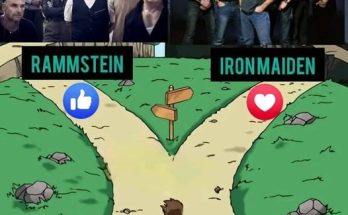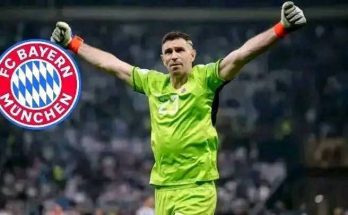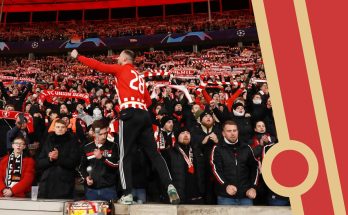The prospect of LeBron James joining the Golden State Warriors has ignited one of the most tantalizing “what if?” scenarios in recent NBA history: what happens when the greatest player of a generation partners with its greatest shooter? Yet amid the swirling speculation, Steph Curry has emerged as the most vocal opponent of any move that would compromise the Warriors’ long-term blueprint.
To fully grasp Curry’s position, we need to revisit when rumors first resurfaced. As the NBA trade deadline approached in February 2024, reports surfaced that the Warriors had contacted the Lakers about LeBron James. ESPN’s Adrian Wojnarowski and Ramona Shelburne noted that the Warriors had made inquiries, but neither James nor the Lakers were receptive ([si.com][1]). Following a narrow loss, Curry told reporters that he wasn’t surprised by such trade talks, emphasizing they’re part of normal front office activity. He even described the chatter as “a nice little surprise”([si.com][2])—but he consistently stressed that any move must make sense, and that he personally never pushed for it, nor did he expect LeBron would depart LA .
Behind the scenes, though, Curry wasn’t just passively observing. He, Draymond Green, and coach Steve Kerr quickly cautioned against reckless decisions.
On January 14, 2025, with the Warriors struggling at 19–20 and sitting in 12th place in the Western Conference, Curry spoke out against “desperate trades” that would mortgage the future for marginal short-term gain([sfchronicle.com][3], [sfgate.com][4]). He questioned deals that would “deplete the future,” urging the organization to be mindful of its legacy and the assets it holds. In his locker room remarks, Curry emphasized that while he welcomed improvements around him, he would not support “flinging assets,” especially draft picks and young talent, just to tick a box .
This appeal for fiscal and strategic prudence stands in stark contrast to the typical star-player narrative of “win now at all costs.” Brian Windhorst of ESPN noted that Curry’s attitude is essentially “anti-LeBron” by characterizing his stance as the last sane voice amid the trade frenzy .
Curry’s position is rooted in a finely balanced calculation of his current prime, a potential last golden window, and the responsibility to the franchise’s future. At 36 in 2025, Curry still plays at an elite level, but his peak years aren’t infinite. The Warriors’ ownership and roster construction hinge on utilizing draft capital and young assets to both sustain and replenish this window. Sacrificing them at the trade deadline could set off a long-term decline that would haunt the franchise for years.
Moreover, Curry’s message is personal. He has worn the Warriors jersey since being drafted in 2009 and has deep institutional roots: two MVP titles, four championships, and a connection to the Bay Area off the court, from charitable endeavors to family life. Loyalty and legacy matter. He has repeatedly reminded the organization that he intends to finish his career in Golden State , and that the team must build around him intelligently, not recklessly.
It also speaks volumes that Curry, trusted as the franchise’s emotional heartbeat, saw it as his responsibility to speak out. In a sport where star players often defer to management, his candor—equating reckless trades to a “wild swing” that sacrifices future drafts—demonstrates a depth of engagement uncommon for generational talents .
The other side of this equation is LeBron James himself. His camp, led by agent Rich Paul, has consistently expressed disinterest in a Warriors move. In August 2024, it was reported that Paul was “adamantly opposed” to a LeBron-to-Warriors trade. This opposition appears rooted in preserving LeBron’s legacy and public perception—he would have become a four-team player, something he’s been cautious to avoid. Data from Reddit discussions echoed this: sources describe Paul as instructing both teams to walk away, shielding LeBron from backlash.
Placing these perspectives side by side, it becomes clear that what started as a tantalizing rumor morphed into a thoughtful, multi-dimensional decision. On one front, Curry and the Warriors leadership prioritized sustainability, while on the other, LeBron’s own camp blocked any unexpected relocation. The result? Two superstars who respect each other but whose circumstances make a joint venture unlikely at best.
Curry himself has weighed in on the fascination around a joint team-up. In December 2024, he told ESPN’s Malika Andrews that a pairing “probably” won’t happen. He referred to the “what-ifs” as something that fans can discuss, joking that “we just hoop.” His tone struck a balance—enthused but realistic, respectful of the myth while grounded by reality.
The news cycle reacted accordingly. Sports Illustrated’s Kristen Wong covered Curry’s initial response in February 2024, emphasizing that while he wasn’t surprised, he never expected the trade talks to go far as he didn’t see LeBron leaving the Lakers ([si.com][2]). NBA insiders, including Brian Windhorst, were surprised at Curry’s mature framing, highlighting how rare it is to hear a star emphasize the franchise’s future over personal glory.
Despite those high-stakes discussions, what followed was a typical Warriors season of peaks and valleys. The team hovered around .500, playoff positioning remained uncertain, and pressure mounted for change. The buzz around LeBron died down. Instead, attention shifted to more realistic upgrades like Jimmy Butler or Zion Williamson—though still without compromising core assets.
Pressed for trade-sense rather than desperation, Curry’s approach leaned toward strategic enhancements: a veteran wing to complement his shot, perhaps a young star with upside, or a veteran sharpshooter. His message: “If the price is right, we’ll do it—but only if it doesn’t unravel what this organization is built upon.” That deeply visceral statement—about not “flinging assets”—is at the heart of what makes his stance compelling: it’s not anti-win, it’s pro-sustainable, pro-legacy.
Let’s pause and reflect on how improbable a James–Curry partnership would have been. Their talents fit seamlessly—a playmaking, athletic forward paired with the league’s deadliest shooter. They’d represent an offensive juggernaut, yet the window was closing soon. LeBron was heading into his late 30s and had a no-trade clause. The Lakers were content keeping him. The Warriors would have to sacrifice their future draft picks, young players like Kuminga or Podziemski, and their cap flexibility. Simply put: it would be a blockbuster trade, risky for both sides.
Under those circumstances, Curry’s opposition emerges not as cowardice but foresight. He’s ensuring the Warriors don’t burn down the building for a hit-and-miss renovation. He’s defending an ideal: that titles aren’t built overnight on one superstar’s shoulders—they’re constructed through homegrown development, smart drafting, and organizational culture.
Some critics might argue that Curry is playing it safe, that bold action is needed. But the real boldness comes from standing firm when the heat of speculation leads others to act rashly. Curry repeatedly said publicly, “I want to be here. I want to be a Warrior for life. But life in the NBA is wild.” Those words clarify that he’s not a short-sighted celebrity seeking one more ring—he’s the franchise’s steward, investing in its future and his own legacy within it.
As we move forward, Curry’s voice shaped how ownership, management, and fans evaluate every trade rumor. It set boundaries. It said: yes, bring potential, but not at any cost. His influence ripples through every boardroom meeting, every front office note: don’t compromise without cause.
Ultimately, the LeBron-to-Warriors saga stands as a grand fantasy: a glimpse of what could have been—but also what shouldn’t be. Curry’s clear-eyed intervention reminds us: not all dreams are worth chasing if they damage what’s real and enduring.


